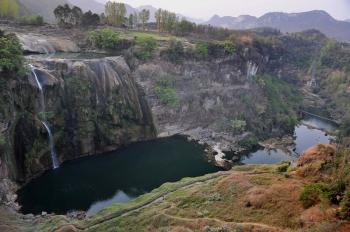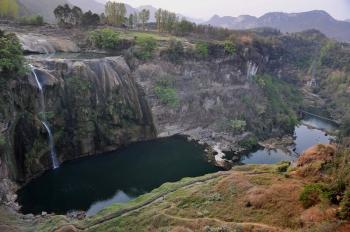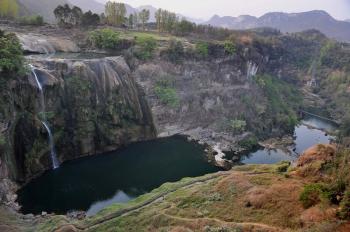The rivers and lakes which inspired the Chinese to refer to Guilin as “the most beautiful under Heaven” are disappearing as the severe drought in southwest China continues unabated.
Huangguoshu Waterfall at Standstill
Tourism in southwest China has likewise been threatened by the drought. The Huangguoshu Waterfall in Guizhou Province is now only a quarter of its normal size due to the decreased water flow upstream.
In the past, the great waterfall sent forth billows of mist and vapor, and its roaring waters could be heard more than a mile away. The falls are now so silent that one has to get very close to notice its presence.
On March 26, the waterfall almost dried up. The once-surging waterfall presented a rare picture of tranquility that morning.
Reports indicate that nine of the 10 water reservoirs in the city of Anshun, where the falls are located, have dried up, and that drinking water supplies in Yunnan Province have been adversely affected.





